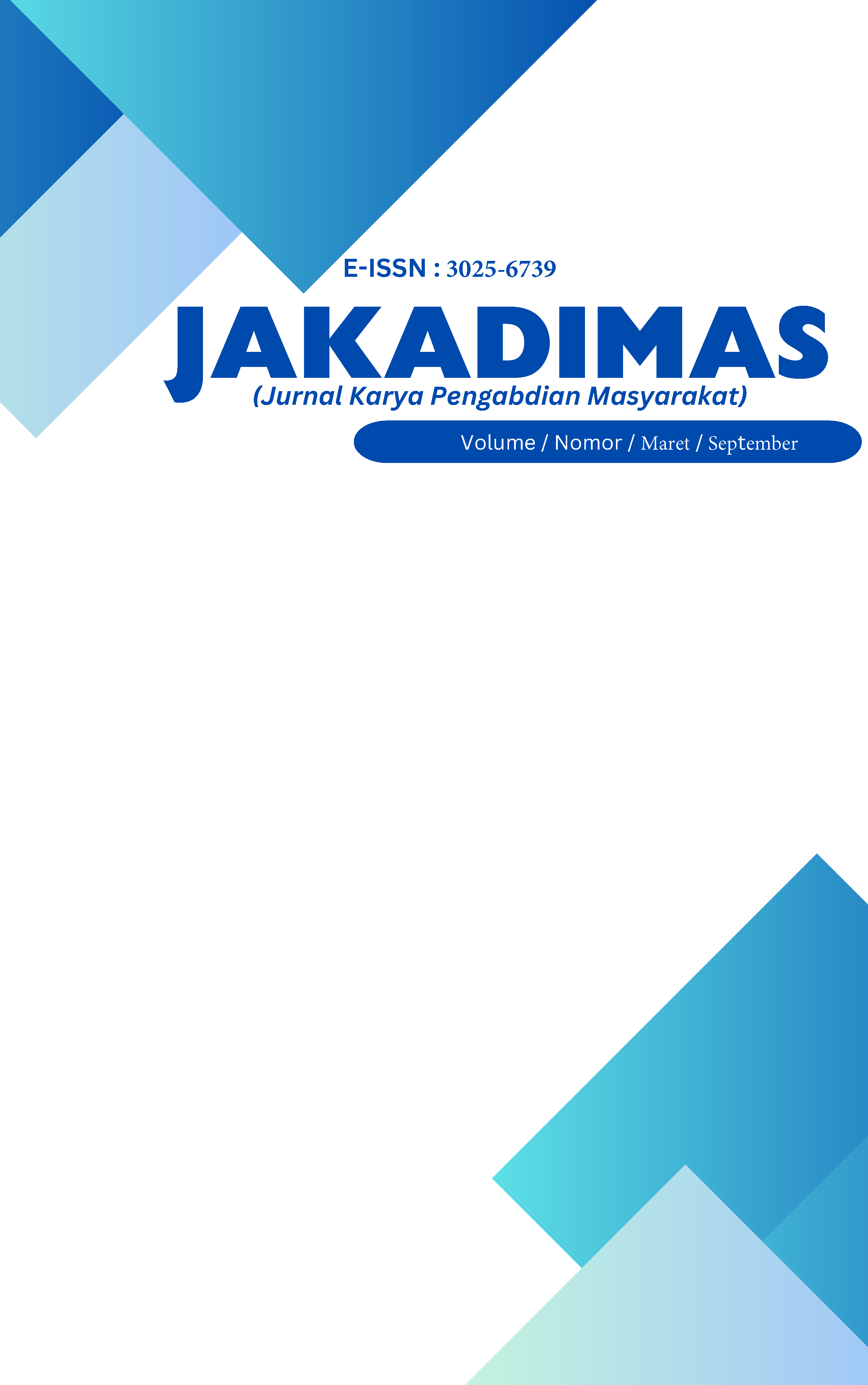Development Of Samia Silkworms, Cassava Leaves And Sissy Plants With Medicinal Properties In Yard Intensification With Simple Agroforestry Patterns For The Younger Generation In The Widodomartani Community, Ngemplak, Sleman, Special Region of Yogyakarta
DOI:
https://doi.org/10.33061/jakadimas.v1i1.9473Keywords:
Ulat sutera samia daun singkong, Tanaman Banci, Generasi MudaAbstract
The Widodomartani community has practiced land management in their yard with simple agroforestry as a form of intensification. For the younger generation to understand the practice of agroforestry from an early age, it is necessary to introduce it so that they are motivated to practice it as part of the family income. There are 4 forms of agroforestry, namely trees planted regularly with non-tree plants, there are 2 compositions, namely sengon trees with kimpul, Japanese papaya, sissy. Trees were planted around the land and non-tree trees, such as mahogany, cassava, sweet potato, chili, papaya, ginger, turmeric, galangal, and sissy were planted inside. Mixed trees with 2 trees, namely the composition of mahogany trees, coffee, and mahogany trees, wadang, melinjo, coffee, sissy. Mixed trees next to it are land planted with non-tree 1 composition of mahogany, melinjo, ketapang, johar and the land next to it is banana, papaya, moringa, ginger, chili, spinach, tomato, eggplant, sissy. 2 plants are trying to be more popularized, namely the Sissy plant and Cassava or Cassava. The sissy plant is popularized because it is easy to grow in various conditions, can help treat intestinal and digestive disorders, and is easy to consume like spinach. Cassava or cassava plants for added value, one of which is used to develop Samia silkworm silk.
Downloads
Published
How to Cite
Issue
Section
License
Copyright (c) 2023 JAKADIMAS (Jurnal Karya Pengabdian Masyarakat)

This work is licensed under a Creative Commons Attribution-ShareAlike 4.0 International License.
Authors who publish with this journal agree to the following terms:
- Copyright on any article is retained by the author(s).
- The author grants the journal, right of first publication with the work simultaneously licensed under a Creative Commons Attribution License that allows others to share the work with an acknowledgment of the work’s authorship and initial publication in this journal.
- Authors are able to enter into separate, additional contractual arrangements for the non-exclusive distribution of the journal’s published version of the work (e.g., post it to an institutional repository or publish it in a book), with an acknowledgment of its initial publication in this journal.
- Authors are permitted and encouraged to post their work online (e.g., in institutional repositories or on their website) prior to and during the submission process, as it can lead to productive exchanges, as well as earlier and greater citation of published work.
- The article and any associated published material is distributed under the Creative Commons Attribution-ShareAlike 4.0 International License








